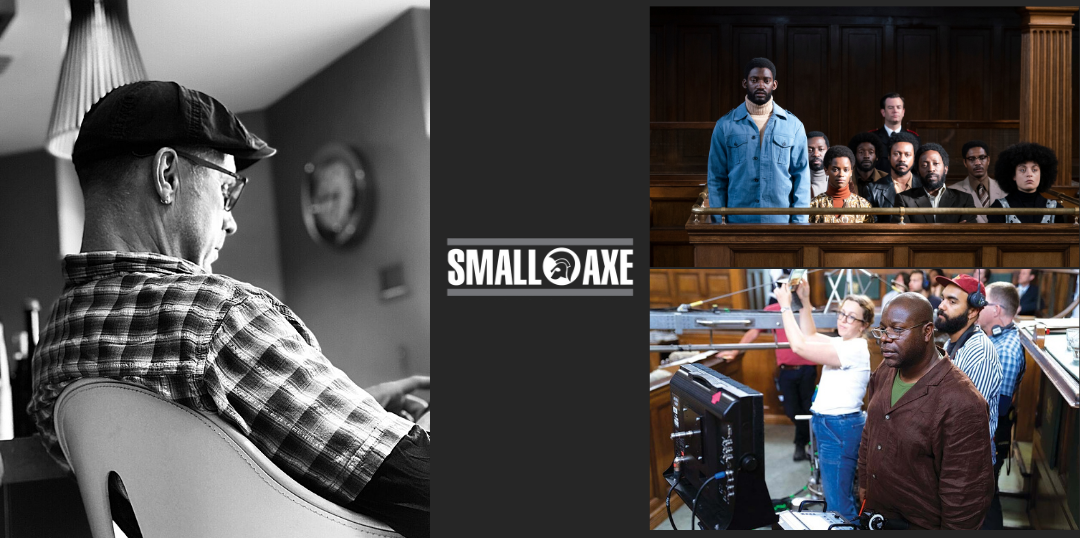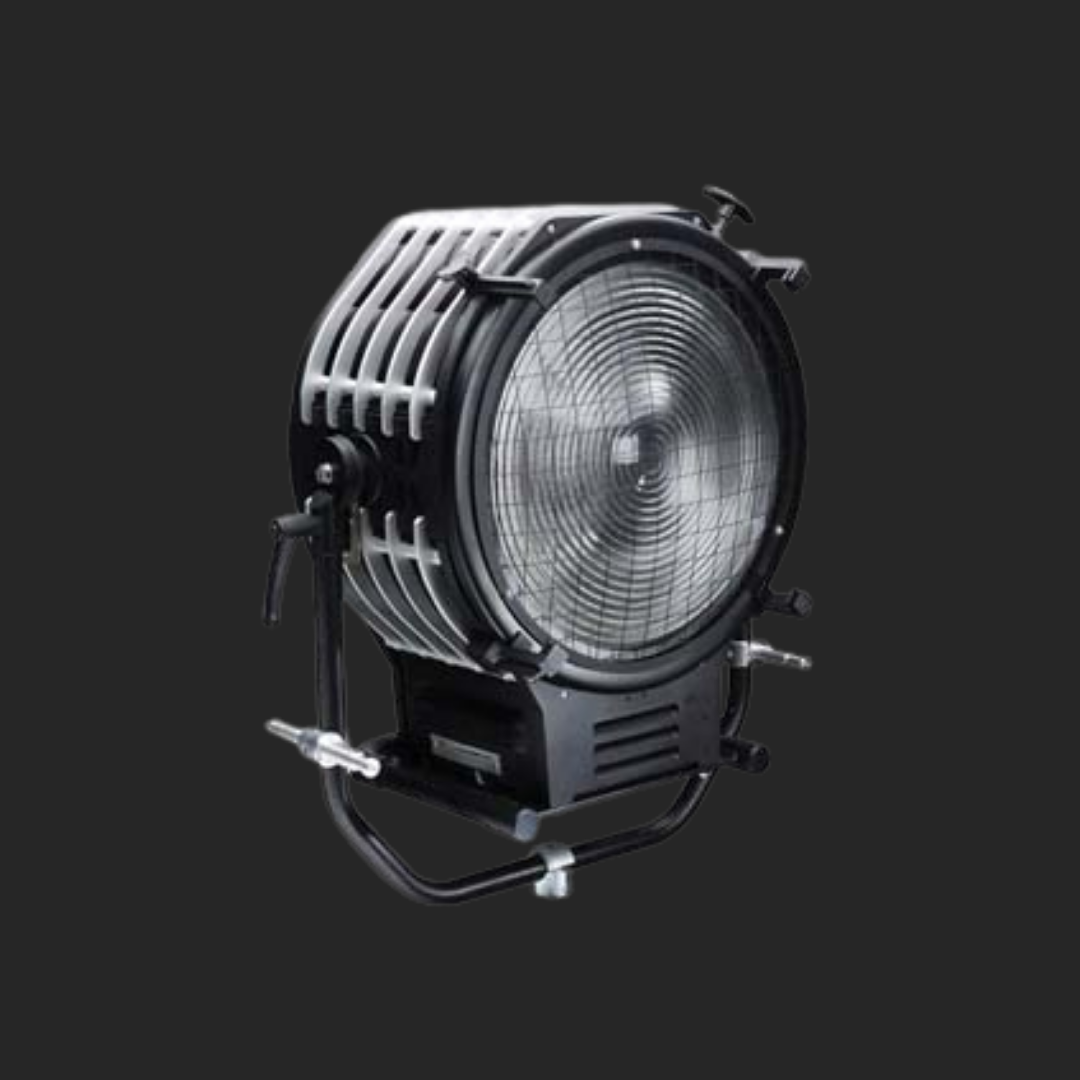Small Axe: An Interview with Gaffer Ian Glenister
Steve McQueen’s Small Axe is a deeply emotional anthology shining a spotlight on the joys and pains of the Black British community by telling five powerful stories based on true events. Each of the five films – Mangrove, Lovers Rock, Education, Alex Wheatle and Red, White and Blue, follows the trials and tribulations of the West Indian community in London between the 1960s and 1980s.
We’re excited to see the films nominated for series of awards this season, and for all of us at Pixipixel, it was a great pleasure to work with gaffer Ian Glenister to supply the lighting equipment for the project. Dive in to our interview with Ian to learn about his fascinating career journey becoming a gaffer, favourite kit, and more about the lighting approach for the Small Axe films.
Gaffer Ian Glenister, plus Small Axe stills and behind-the-scene photos
Q: Ian, tell us how you started in the film industry.
I started my career as an electrician and ended up running around London as a breakdown engineer. After a few years, I was bored and decided to go backpacking. When I came back, I really didn't really want to be an electrician, so I joined fire brigades. I got bored at being a fireman very quickly. As I left, the BBC was looking to hire electricians to go into the television centre. 3,500 people applied for 18 positions and I got hired. I still don't know why as I knew nothing about filming. I remember one of the questions was “What do you think we need electricians for?”, I replied: “Lights, I suppose”. That was my attitude – I'm an electrician, I can learn.
Q: How did your career evolve from there?
My colleagues who started at the same time were all highly qualified electricians and I learned a lot. I could do the job and within five years I was a gaffer. In the year 2000, we were offered redundancy and I walked away from the BBC with no intention of really staying in the industry. I got a job a week later on a BBC film and that's really where it started. I was just an electrician – content, happy to work and no ego involved. I had no aspirations to be a gaffer, but I knew I could do it.
Q: What is the best part of the job?
What I enjoy most about the job are the people around me. I like the fact that crews can come together with such passion to do something inspiring, and they become families in a way. I think it's fascinating. In this process, I only ever see myself as a facilitator. I'm here to help fulfil a vision – just tell me what you want, how you would like it to look, show me a picture, and I'll go and recreate it.
Q: What was your breakthrough moment?
Is there a breakthrough moment? I don't know. It was sort of a slow process and a lot of it has to do with family. My wife wanted to go back to education, so I looked after the kids. I was always very content not to chase work to consider my family always. It’s never about my career but more about the people around me.
Q: Share with us details about the Small Axe brief and lighting approach.
There wasn’t really a specific brief for each of the five films in the Small Axe series. Steve McQueen knew what each film should look like and we came up with ways of achieving his vision. Each of the five films presented us with unique problems and we approached them in different ways. At times we researched new ways of doing things and sometimes we used old TV techniques.
For Mangrove, we shot a scene in a courtroom in Kingston. The director Steve McQueen and cinematographer Shabier Kirchner wanted to create a very specific feel representing the time. We came up with a way of achieving that by choosing a type of lamp that not many people like. I think it's one of the best lamps and Pixipixel really came forward supplying us with the K5600 Alpha.
Q: Would you say this was the most challenging scene in terms of lighting?
No, I don't think it was. The courtroom scene probably had one of the biggest rigs, but it was very simple. We had sun coming trough and had to control the light to make shooting possible, but it wasn't particularly challenging. It was big, but it wasn't technical. Coming up with a way of rigging to shoot in a back garden where we couldn't get a cherry picker was harder for sure.
The Small Axe films show a piece of history and a lot of the stories are about people my age. I grew up around Brixton and I used to go to the blues parties myself. Steve and Shabier changed some of my expectations when recreating London’s house party scene for Lovers Rock. I expected the room to be very dark because that’s how I remembered it. You don't know who you're next to or who you're dancing with. Steve wanted to show more of people’s enjoyment and we came up with a way of placing the cameras and lighting in a way to see 360 ° in a room and show a lot of detail in the right colour. That was probably the most technically hard bit.
Q: As we are talking about different projects, do you have a favourite piece of lighting kit that you always take on set?
I'm a big fan of K5600 products. These lamps enable me to give DOPs so many different lighting variations quite quickly. I can go from a hard light all the way through to a traditional Fresnel and I can get a lot of punch out. Most people would disagree and say they don't compete with an Arri M40. I find the K5600 Alpha to be a very versatile lamp. I also like the Astera Helios and Astera Titan tubes that have come so far from the humble fluorescent tube to a multicoloured LED light that we can do so much with. It’s unbelievable how far we’ve got.
Q: How do you stay informed about all the latest innovations and techniques?
The team at Pixipixel sends out notifications with the latest kit so I stay informed. There's the annual BSC Show as well. I will attend again whenever that’s possible given the current COVID-19 situation. I remember I saw a very special lamp at the show a couple of years back. I thought was really good, but it never really happened. It was a plasma far more efficient than LED in terms of the amount of light you get. It was great but it'd be a bit more time for a bit more development.
At the end of the day, it's hard or soft light. I've always viewed my job as actually placing the shadow rather than placing the light. What the shadow is supposed to look like? When helping youngsters along the way, I always say “We place shadows. We use lights to place shadows. The art is about the shadow.” Anyone can put a big light up and go: “Oh, I've lit it”, but you’ve got to do more with it.
When we were in Wolverhampton for Small Axe, Steve McQueen asked me if I ever wanted to be a cinematographer. I just said: “I'm a facilitator and not the artist, Steve. I'm a paintbrush”.
Q: What would be your piece of advice for young gaffers starting in the industry?
Be nice to people. As simple as that. Be nice. Be polite. Be courteous. People will remember you far more if you are nice and polite. Treat your crew with respect. That’s the only advice I can give to anyone.



